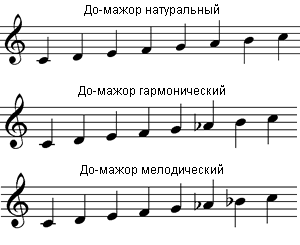Tritoni V Lya Bemolj Mazhore
Thanks so much for this, Michael. One of the things I loved about finding Kodaly training (movable do) is that I have perfect pitch and therefore no one ever really thought I needed much in the way of ear training, even in university. If you could do the exercise, next please! So when I experienced my ear finally being trained, it was the biggest kick I could imagine. I loved it and still do. Yes, I thought it very strange that the website you referred to said that movable do didn’t develop relative pitch. Relate to changing fa to fi etc.
This is so interesting. It inspired me to spend a little time wandering around looking at the various sides of this issue. It’s all completely new to me as I never learned any of these systems. When I took musicianship classes back in the 70s, I was simply taught to sing a succession of intervals.
The first sightsinging exercises I ever had to perform in a classroom setting were atonal tunes. Maybe it was the academic world’s belief at the time in the historical inevitability of the death of tonality, or maybe it was the fact I was on a composition track rather than a performance track, but at the time I didn’t know there was any other approach. Movable do draws attention to the intervals. Tcpmp for palm tx download free. What about music dictation (writing music that you are listening to)? 
Thys Co., 379 U.S. 29 (1964), was a 1964 decision of the United States Supreme Court holding that a contract calling for payment of patent royalties after the expiration of the licensed patent was misuse of the patent right and unenforceable under the.
If you hear notes, you write them quickly. If you hear intervals then you must “translate” them into notes. Even done quickly, it will never be as easy Movable do seemed to me interesting for amateurs who would not want to spend too much time learning music. Apparently it is not the case, since you write that 3 years are necessaryBut if you have got time, why don’t you do things “properly” and call a do a do? Forgive my english, I am French •. Kedves Michael!
Irhatok magyarul is, ugye? Can I write in Hungarian, too? Foleg, mivel Magyarorszagon nottem fel es zenei kepzesem onnan szarmazik. Most Kanadaban elek mar 22 eve. Nagyon jo hallasom van, es szerencses voltam gyermekkoromban, hogy nagyon jo zenei oktatast kaptam, nagyon jo tanarral, mindezt altalanos iskolai kereteken belul, egy videki kis faluban. Viszont a tanarom a megyei zenei szakfelugyelo volt, aki nagyon tehetseges volt zenekulturaban.
Nos, angol nyelvu zenei tudasom igy nem sok, mivel nem igazan kerultem olyan helyzetbe, hogy ujra kellett volna tanuljak mindent angol nyelven. De amit ertelmezek a “Movable Do” ugyben, az az, hogy az elojegyzestol fuggoen, ott kezdem a Do-t ahol az elojegyzes eloirja. Tehat az lehet az also C vonalan, de lehet az elso vonalkozben is, ami C-dur-ban az F-nek felel meg. Szerintem sokkal konnyebb igy enekelni, mert pontosan az a fontos, hogy a hangkozoket mindig be tudjuk tartani es felismerjuk kottaolvasasnal. Maskepp el sem tudom kepzelni, hogyan lehet egy idegen kottat elenekelni. Meg kell nezni az elojegyzest, megkeresni a Do helyet, s onnantol kezdve csak tudni kell, hogy mikor kell felhangokat enekelni az elojegyzesek miatt.
Ettol egyszerubb dolgot nem tudok. Miert talaljak az emberek ezt neheznek?
Igaz, en meg egyaltalan nem tudok a mai napig C D E F G-vel enekelni, mert en szolmizalva tanultam meg. Csak azt sajnalom, hogy az en gyerekeim mar kozel sem kapnak ilyen jo zenei oktatast, es idohianyban, bizony en sem tudom oket megtanitani ugy, ahogy szeretnem. De elnezest a hosszu hozzaszolasert.

Amikor eloszor felfedeztem a honlapod(mivel hasonlo koruak vagyunk, talan nem sertelek meg a tegezessel igy ismeretlenul sem)a magyar vonatkozas kapott meg. Gyonyoru a szerzemenyed Magyarorszagrol. Koszonet erte es buszkeve tesz, hogy magyarnak szulettem. Tovabbi jo zenelest: Udvozlettel Torontobol: Aniko •. Hey Michael, Kudos for stepping out on this one. I’ve been on the moveable do side of the argument since I left SFCM. When I began to realign my brain to sing moveable I loved the functionality of it, and I didn’t struggle anymore (and as you know I really used to).
I use and teach moveable do with a do-based minor. We just change mi to me, la to le, and ti to te. This is of great benefit to the many students here in the Midwest of America (truly a different country in most regards) who are not as prepared as most conservatory students to sightsing. I learned on the numbers system and we got around the “mode-problem” the same way solfegge gets around the mode problem. Just change the vowel: Lowered Three is sung as “Threy”. Raised Four is sung as “Feer.” Lowed Six = “Sex” Lowered Sev = “Sav” etc.